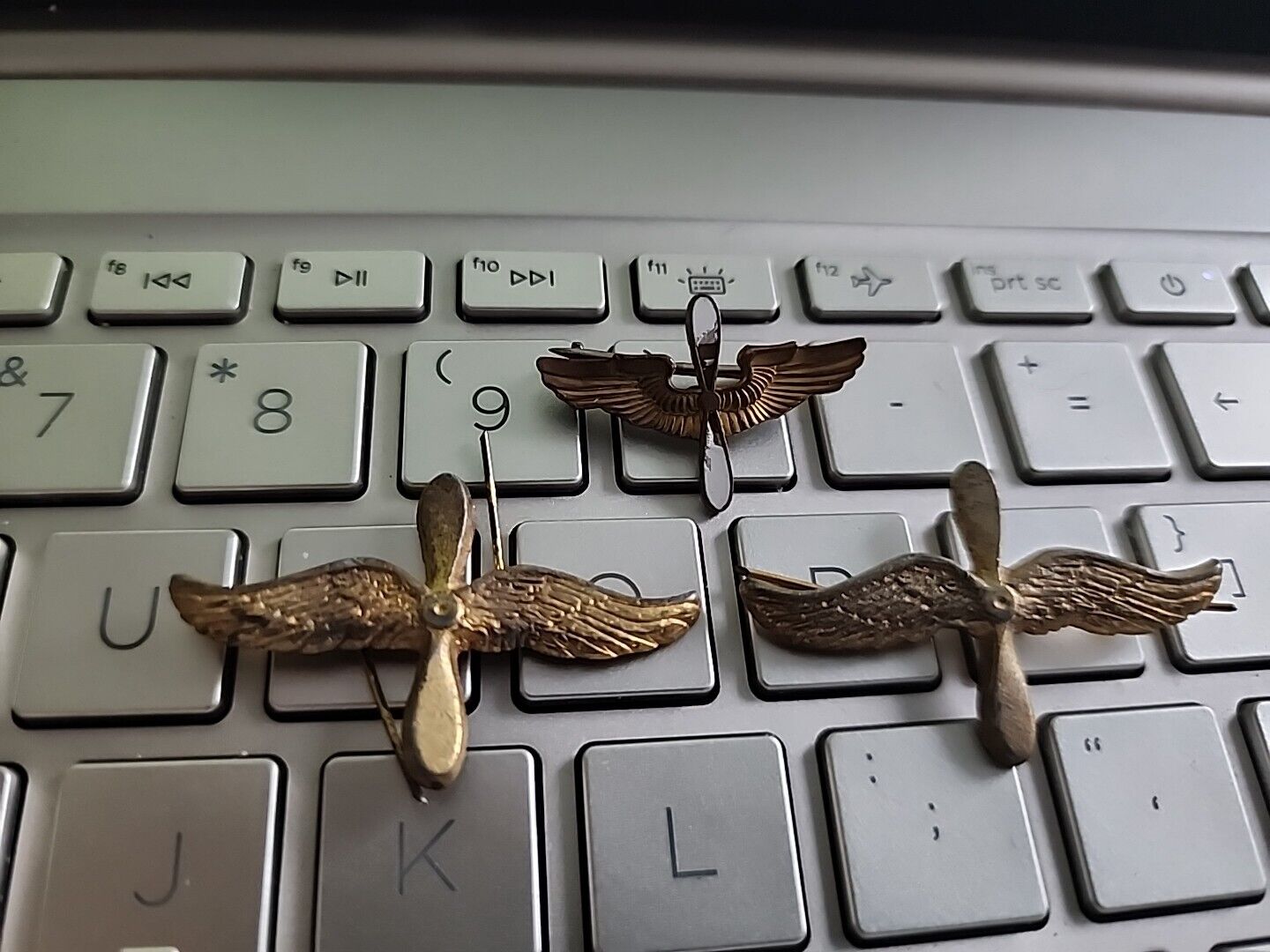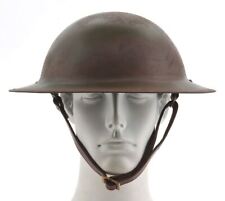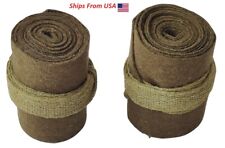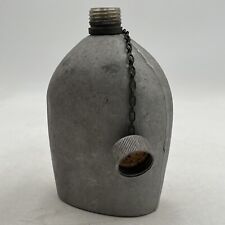When you click on links to various merchants on this site and make a purchase, this can result in this site earning a commission. Affiliate programs and affiliations include, but are not limited to, the eBay Partner Network.
PLEASE FOLLOW OUR E BAY STORESEE ALL PICSSALE SEE OUR STOREPLEASE READ WHOLE ADD
PLEASE SEE STORELOT MORE --COMBINE SHIPPINGSAVE $$$$$$$$$$$$$$$
NOTE: Smaller Device has original paint --Extremely rare
United States Army Air Corps19 languagesToolsFrom Wikipedia, the free encyclopediaFor the current active service branch, seeUnited States Air Force.United States Army Air CorpsBranch insignia of the Army Air CorpsActive1926– 1942DisbandedSeptember 18, 1947CountryUnited StatesBranchArmyTypeAir forceRoleAerial warfareSize14,650 men, 1,646 aircraft (1932)
16,863 men, 855 aircraft (1936)
152,125 men, 6,777 aircraft (1941)Garrison/HQMunitions Building,Washington, D.C.ColorsUltramarine blueandgolden orangeMarchArmy Air CorpsEngagementsWorld War IICommandersNotable
commandersMajor GeneralBenjamin D. Foulois
Major GeneralHenry H. ArnoldInsigniaRoundelUnited States Army Air Corps Recruiting Poster
TheUnited States Army Air Corps(USAAC) was theaerial warfareservice component of theUnited States Armybetween 1926 and 1941. AfterWorld War I, as early aviation became an increasingly important part of modern warfare, a philosophical rift developed between more traditional ground-based army personnel and those who felt that aircraft were being underutilized and that air operations were being stifled for political reasons unrelated to their effectiveness. The USAAC was renamed from the earlierUnited States Army Air Serviceon 2 July 1926, and was part of the largerUnited States Army. The Air Corps became theUnited States Army Air Forces(USAAF) on 20 June 1941, giving it greater autonomy from the Army's middle-level command structure. DuringWorld War II, although not an administrative echelon, the Air Corps (AC) remained as one of thecombat armsof the Army until 1947, when it was legally abolished by legislation establishing theDepartment of the Air Force.[1]
The Air Corps was renamed by theUnited States Congresslargely as a compromise between the advocates of a separate air arm and those of the traditionalist Army high command who viewed the aviation arm as an auxiliary branch to support the ground forces. Although its members worked to promote the concept of air power and an autonomous air force inthe yearsbetween theworld wars, its primary purpose by Army policy remained support of ground forces rather than independent operations.
On 1 March 1935, still struggling with the issue of a separate air arm, the Army activated theGeneral Headquarters Air Forcefor centralized control of aviation combat units within the continental United States, separate from but coordinate with the Air Corps. The separation of the Air Corps from control of its combat units causedproblems of unity of commandthat became more acute as the Air Corps enlarged in preparation for World War II. This was resolved by the creation of the Army Air Forces (AAF), making both organizations subordinate to the new higher echelon.
On20 June 1941, the Army Air Corps' existence as the primary air arm of the U.S. Army changed to that of solely being the training and logistics elements of the then-newUnited States Army Air Forces, which embraced the formerly-named General Headquarters Air Force under the new Air Force Combat Command organization for front-line combat operations; this new element, along with the Air Corps, comprised the USAAF.[2]
The Air Corps ceased to have an administrative structure after 9 March 1942, but as "the permanent statutory organization of the air arm, and the principal component of the Army Air Forces," the overwhelming majority of personnel assigned to the AAF were members of the Air Corps.[3]
Creation of the Air Corps[edit]Be it enacted by the Senate and House of Representatives of the United States of America in Congress Assembled, that the Act entitled "An act for making further and more effectual provision for the national defense, and other purposes," approved June 3, 1916, as amended, be, and the same is hereby, amended so that the Air Service referred to in that Act and all subsequent Acts of Congress shall be known as the Air Corps.
Public Law 69-446, 2 July 1926[4]
TheU.S. Army Air Servicehad a brief but turbulent history. Created duringWorld War Ibyexecutive orderof PresidentWoodrow Wilsonafter America entered the war in April 1917 as the increasing use of airplanes and the military uses of aviation were readily apparent as the war continued to its climax, theU.S. Army Air Servicegained permanent legislative authority in 1920 as a combatant arm of the line of theUnited States Army. There followed a six-year struggle between adherents of airpower and the supporters of the traditional military services about the value of an independent Air Force, intensified by struggles for funds caused by skimpy budgets, as much an impetus for independence as any other factor.[5]
The Lassiter Board, a group ofGeneral Staffofficers, recommended in 1923 that theAir Servicebe augmented by an offensive force of bombardment and pursuit units under the command of Army general headquarters in time of war, and many of its recommendations became Army regulations. The War Department desired to implement the Lassiter Board's recommendations, but the administration ofPresidentCalvin Coolidgechose instead to economize by radically cutting military budgets, particularly the Army's.[6][n 1]The Lampert Committee of theHouse of Representativesin December 1925 proposed a unified air force independent of the Army and Navy, plus a department of defense to coordinate the three armed services.[7]However another board, headed byDwight Morrow, was appointed in September 1925 by Coolidge ostensibly to study the "best means of developing and applying aircraft in national defense" but in reality to minimize the political impact of the pending court-martial ofBilly Mitchell(and to preempt the findings of the Lampert Committee). It declared that no threat of air attack was likely to exist to the United States, rejected the idea of a department of defense and a separate department of air, and recommended minor reforms that included renaming the air service to allow it "more prestige."[8]
In early 1926 the Military Affairs Committee of the Congress rejected all bills set forth before it on both sides of the issue. They fashioned a compromise in which the findings of the Morrow Board were enacted as law, while providing the air arm a "five-year plan" for expansion and development. Maj. Gen.Mason Patrick, the Chief of Air Service, had proposed that it be made a semi-independent service within the War Department along the lines of the Marine Corps within the Navy Department, but this was rejected; only the cosmetic name change was accepted.[9][n 2]The legislation changed the name of the Air Service to the Air Corps, (in the words of one analyst) "thereby strengthening the conception of military aviation as an offensive, striking arm rather than an auxiliary service."[10]
Formations ofKeystone LB-7s(lower) andBoeing P-12s(upper) on aerial maneuvers over Burbank, California, 1930
The Air Corps Act (44Stat.780) became law on 2 July 1926. In accordance with the Morrow Board's recommendations, the act created an additionalAssistant Secretary of Warto "help foster military aeronautics", and established an air section in each division of the General Staff for a period of three years. Two additional brigadier generals would serve as assistant chiefs of the Air Corps.[11][n 3]Previous provisions of the National Defense Act of 1920 that all flying units be commanded only byrated personneland that flight pay be awarded were continued. The Air Corps also retained the "Prop and Wings" as its branch insignia through its disestablishment in 1947. Patrick became Chief of the Air Corps and Brig. Gen.James E. Fechetcontinued as his first assistant chief. On 17 July 1926, two lieutenant colonels were promoted tobrigadier generalfor four-year terms as assistant chiefs of Air Corps:Frank P. Lahm, to command the newAir Corps Training Center, and William E. Gillmore, in command of theMateriel Division.[12][n 4]
Of the new law and organization, however, Wesley F. Craven and James L. Cate in the official history of theUnited States Army Air Forcesconcluded that:
"The bill which was finally enacted purported to be a compromise, but it leaned heavily on the Morrow recommendations. The Air Corps Act of 2 July 1926 effected no fundamental innovation. The change in designation meant no change in status: the Air Corps was still acombatant branch of the Armywith less prestige than the Infantry."[11]
The position of the air arm within the Department of War remained essentially the same as before, that is, the flying units were under the operational control of the various ground forcescorps areacommands and not the Air Corps, which remained responsible for procurement and maintenance of aircraft, supply, and training. Because of a lack of legally specified duties and responsibilities, the new position ofAssistant Secretary of War for Air, held byF. Trubee Davisonfrom July 1926 to March 1933, proved of little help in promoting autonomy for the air arm.[13]
Five-year expansion program[edit]
The Air Corps Act gave authorization to carry out a five-year expansion program. However, a lack of appropriations caused the beginning of the program to be delayed until 1 July 1927. Patrick proposed an increase to 63tactical squadrons(from an existing 32) to maintain the program of the Lassiter Board already in effect, but Chief of Staff Gen.John Hinesrejected the recommendation in favor of a plan drawn up by ground force Brig. Gen.Hugh Drumthat proposed 52 squadrons.[14][15][n 5]The act authorized expansion to 1,800 airplanes, 1,650 officers, and 15,000 enlisted men, to be reached in regular increments over a five-year period. None of the goals was reached by July 1932. Neither of the relatively modest increases in airplanes or officers was accomplished until 1938 because adequate funds were never appropriated and the coming of theGreat Depressionforced reductions in pay and modernization across the board in the Army.[16]Organizationally the Air Corps doubled from seven to fifteengroups, but the expansion was meaningless because all were seriously understrength in aircraft and pilots.[17](Origin of first seven groups shown here)
Air Corps groups added 1927–1937GroupStationDate activatedAircraft type18th Pursuit GroupWheeler Field, Hawaii20 January 1927PW-97th Bombardment GroupRockwell Field, California1 June 1928LB-7,B-3A12th Observation Group¹Brooks Field, Texas1 October 1930O-1920th Pursuit GroupMather Field, California15 November 1930P-128th Pursuit GroupLangley Field,Virginia1 April 1931P-617th Pursuit Group²March Field, California1 July 1931P-1219th Bomb GroupRockwell Field, California24 June 1932B-1016th Pursuit GroupAlbrook Field, Canal Zone1 December 1932P-1210th Transport GroupPatterson Field,Ohio20 May 1937C-27C-33¹Inactivated on 20 May 1937²Redesignated 17th Attack Group (1935), 17th Bomb Group (1939)
As units of the Air Corps increased in number, so did higher command echelons. The2nd Wing, activated in 1922 as part of the Air Service, remained the only wing organization in the new Air Corps until 1929, when it was redesignated the2nd Bombardment Wingin anticipation of the activation of the1st Bombardment Wingto provide a bombardment wing on each coast.[18]The 1st Bomb Wing was activated in 1931, followed by the3rd Attack Wingin 1932 to protect the Mexican border, at which time the 1st became the1st Pursuit Wing. The three wings became the foundation of General Headquarters Air Force upon its activation in 1935.
Aircraft and personnel 1926–1935[edit]O-46A at Wright Field
The Air Corps adopted a new color scheme for painting its aircraft in 1927, heretofore paintedolive drab. The wings and tails of aircraft were paintedchrome yellow, with the words "U.S. ARMY" displayed in large black lettering on the undersurface of the lower wings. Tail rudders were painted with a vertical dark blue band at the rudder hinge and 13 alternating red-and-white horizontal stripes trailing. The painting of fuselages olive drab was changed to blue in the early 1930s, and this motif continued until late 1937, when all new aircraft (now all-metal) were left unpainted except for national markings.[19]
B-6A of 1st Bomb Squadron, 9th BG, 1935. The dual stripes on the fuselage denote the aircraft of the squadron commander.P-26A in livery of 19th Pursuit Squadron, 18th PG, Wheeler Field, Hawaii
Most pursuit fighters before 1935 were of theCurtiss P-1 Hawk(1926–1930) andBoeing P-12(1929–1935) families, and before the 1934 introduction of the all-metal monoplane, most front-line bombers were canvas-and-wood variants of theradial enginedKeystone LB-6(60 LB-5A, LB-6 and LB-7 bombers) andB-3A(127 B-3A, B-4A, B-5, and B-6A bombers) designs.[n 6]Between 1927 and 1934, theCurtiss O-1 Falconwas the most numerous of the 19 different types and series of observation craft and its A-3 variant the most numerous of the attack planes that fulfilled the observation/close support role designated by the General Staff as the primary mission of the Air Corps.[20]
Transport aircraft used during the first ten years of the Air Corps were of largelytrimotordesign, such as theAtlantic-Fokker C-2and theFord C-3, and were procured in such small numbers (66 total) that they were doled out one airplane to a base. As their numbers and utility declined, they were replaced by a series of 50 twin-engine and single-engine small transports and used for staff duties. Pilot training was conducted between 1927 and 1937 in theConsolidated PT-3trainer, followed by theStearman PT-13and variants after 1937.
By 1933 the Air Corps expanded to a tactical strength of 50 squadrons: 21 pursuit, 13 observation, 12 bombardment, and 4 attack. All were understrength in aircraft and men, particularly officers, which resulted in most being commanded by junior officers (commonly first lieutenants)[n 7]instead of by majors as authorized.[21]The last open-cockpit fighter used by the Air Corps, theBoeing P-26 Peashooter, came into service in 1933 and bridged the gap between the biplane and more modern fighters.
The Air Corps was called upon in early 1934 to deliver mail in the wake of theAir Mail scandal, involving thepostmaster generaland heads of the airlines. Despite an embarrassing performance that resulted from numerous crashes and 13 fatalities and was deemed a "fiasco" in the media, investigating boards in 1933–1934[n 8]recommended organizational and modernization changes that again set the Air Corps on the path to autonomy and eventual separation from the Army. A force of 2,320 aircraft was recommended by the Drum Board,[n 9]and authorized by Congress in June 1936, but appropriations to build up the force were denied by the administration until 1939, when the probability of war became apparent. Instead, the Air Corps inventory actually declined to 855 total aircraft in 1936, a year after the creation of GHQ Air Force, which by itself was recommended to have a strength of 980.[22]
The most serious fallout from the Air Mail fiasco was the retirement under fire of Major GeneralBenjamin Fouloisas Chief of Air Corps. Soon after theRoosevelt administrationplaced the blame on him for the Air Corps' failures, he was investigated by a congressional subcommittee alleging corruption in aircraft procurement. The matter resulted in an impasse between committee chairmanWilliam N. Rogersand Secretary of WarGeorge Dernbefore being sent to the Army's Inspector General, who ruled largely in favor of Foulois. Rogers continued to severely criticize Foulois through the summer of 1935, threatening future Air Corps appropriations, and despite public support by Dern for the embattled chief, the administration was close to firing Foulois for his perceived attitude as a radical airman and his public criticisms of the administration during the controversy. He retired in December 1935 for the good of the service.[23][24]
The Roosevelt administration began a search for his replacement in September 1935, narrowing the choice to two of the three assistant chiefs,Henry Conger PrattandOscar Westover. Pratt appeared to have the superior credentials, but he had been in charge of aircraft procurement during the Foulois years and was looked upon warily by Dern as possibly being another Mitchell or Foulois. Westover was chosen because he was the philosophical opposite of the two insurgent airmen in all respects, being a "team player".[24]
The open insurgency between 1920 and 1935 of airmen foreseeing a need for an independent air force in order to develop fully the potential of airpower had cost the careers of two of its near-legendary lights, Foulois and Mitchell, and nearly cost the reputation of two others, Pratt andHenry H. Arnold. In terms of the principle of civilian control of the military in peacetime, their tactics and behavior were clearly inappropriate. The political struggle had temporarily alienated supporters in Congress, had been counterproductive of the development of the Air Corps in the short run, and had hardened the opposition of an already antagonistic General Staff. But through their mistakes and repeated rebuffs, the airmen had learned what they were lacking: proof for the argument that the Air Corps could perform a unique mission—strategic bombardment—and the real threat of another world war would soon reverse their fortunes.[25]
Doctrinal development[edit]Strategic bombardment in roles and missions[edit]"The Naval Air Force will be based on the fleet and move with it as an important element in solving the primary missions confronting the fleet. The Army Air Forces will be land-based and employed as an essential element to the Army in the performance of its mission to defend the coasts at home and in our overseas possessions, thus assuring the fleet absolute freedom of action without any responsibility for coast defense."Gen. Douglas MacArthur, Adm. William V. Pratt, 7 January 1931[26]
In March 1928, commenting on the lack of survivability in combat of his unit'sKeystone LB-7andMartin NBS-1bombers, Lt. Col.Hugh J. Knerr, commander of the2nd Bombardment GroupatLangley Field,Virginia, recommended that the Air Corps adopt two types of all-metal monoplane bombers, a short-range day bomber and a long-range night bomber. Instructors at theAir Corps Tactical School(ACTS), also then at Langley, took the concept one step further in March 1930 by recommending that the types instead belightandheavy, the latter capable of long range carrying a heavy bomb load that could also be used during daylight.[27]
The Air Corps in January 1931 "got its foot in the door" for developing a mission for which only it would have capability, while at the same time creating a need for technological advancement of its equipment.Chief of Naval OperationsAdmiralWilliam V. Prattwanted approval of his proposition that all naval aviation including land-based aircraft was by definition tied to carrier-based fleet operations. Pratt reached an agreement with new Army Chief of StaffDouglas MacArthurthat the Air Corps would assume responsibility for coastal defense (traditionally a primary function of the Army but a secondary, wartime function of the Navy) beyond the range of the Army's Coast Artillery guns, ending the Navy's apparent duplication of effort in coastal air operations. The agreement, intended as a modification of the Joint Action statement on coastal defense issued in 1926, was not endorsed by the Joint Army-Navy Board[n 10]and never had authority other than a personal agreement between the two heads of service. Though the Navy repudiated the statement when Pratt retired in 1934, the Air Corps clung to the mission, and provided itself with the basis for development of long-range bombers and creating new doctrine to employ them.[28][29]
The formulation of theories ofstrategic bombinggave new impetus to the argument for an independent air force. Strategic or long-range bombardment was intended to destroy an enemy's industry and war-making potential, and only an independent service would have a free hand to do so. But despite what it perceived as "obstruction" from the War Department, much of which was attributable to a shortage of funds, the Air Corps made great strides during the 1930s. A doctrine emerged that stressed precision bombing of industrial targets by heavily armed long-range aircraft.
This doctrine resulted because of several factors. The Air Corps Tactical School moved in July 1931 toMaxwell Field,Alabama, where it taught a 36-week course for junior and mid-career officers that included military aviation theory. The Bombardment Section, under the direction of its chief, MajorHarold L. George, became influential in the development of doctrine and its dissemination throughout the Air Corps. Nine of its instructors became known throughout the Air Corps as the "Bomber Mafia", eight of whom (including George) went on to be generals during World War II. Conversely, pursuit tacticians, primarily Capt.Claire Chennault, Chief of the school's Pursuit Section, found their influence waning because of repeated performance failures of pursuit aviation. Finally, the doctrine represented the Air Corps' attempt to develop autonomy from the General Staff, which enforced subordination of the air arm by limiting it to support of ground forces and defense of United States territory.
Technological advances in bombers[edit]"Gear down" test flight of the Boeing Y1B-9 bomber in 1932. At the time it was faster than any existing pursuit plane.
New bomber types under development clearly outperformed new pursuit types, particularly in speed and altitude, then considered the primary defenses against interception. In both 1932 and 1933, large-scale maneuvers found fighters unable to climb to altitude quickly enough to intercept attackingB-9andB-10prototypes, a failure so complete that Westover, following the 1933 maneuvers, actually proposed elimination of pursuits altogether.[30]
1933 was a pivotal year in the advancement of aviation technology in which the all-metal airplane came of age, "practically overnight" in the words of one historian, because of the availability of the first practicalvariable-pitch propeller. Coupled with "best weight" design of airframes, the controllable pitch propeller resulted in an immediate doubling of speeds and operating ranges without decreasing aircraft weights or increasing engine horsepower, exemplified by the civilDouglas DC-1transport and the military Martin B-10 bomber.[31]
The B-10 featured innovations that became standard internationally for the next decade: an all-metal low wing monoplane, closed cockpits, rotating gun turrets, retractable landing gear, internal bomb bay,high-lift devicesand full engine cowlings.[31][32]The B-10 proved to be so superior that as its 14 operational test models were delivered in 1934 they were fed into the Air Corps mail operation, and despite some glitches caused by pilot unfamiliarity with the innovations,[n 11]were a bright spot. The first action to repair the damaged image of the Air Corps involved the movement of ten YB-10s from Bolling Field to Alaska, ostensibly for an airfield survey, but timed to coincide with the release of the Baker Board's report in July.
The successful development of the B-10 and subsequent orders for more than 150 (including its B-12 variant) continued the hegemony of the bomber within the Air Corps that resulted in a feasibility study for a 35-ton 4-engined bomber (theBoeing XB-15). While it was later found to be unsuitable for combat because the power of existing engines was inadequate for its weight, the XB-15 led to the design of the smaller Model 299, later to become theBoeing B-17 Flying Fortress, whose first flight was at the end of July 1935. By that time the Air Corps had two projects in place for the development of longer-ranged bombers, Project A for a bomber with a ferry range of 5,000 miles (8,000km), and Project D, for one of a range of up to 10,000 miles (16,000km).[33][34]In June 1936 the Air Corps requested 11 B-15s and 50 B-17s for reinforcing hemispheric defense forces in Hawaii, Alaska, and Panama. The request was rejected on the basis that there were no strategic requirements for aircraft of such capabilities.[35]







